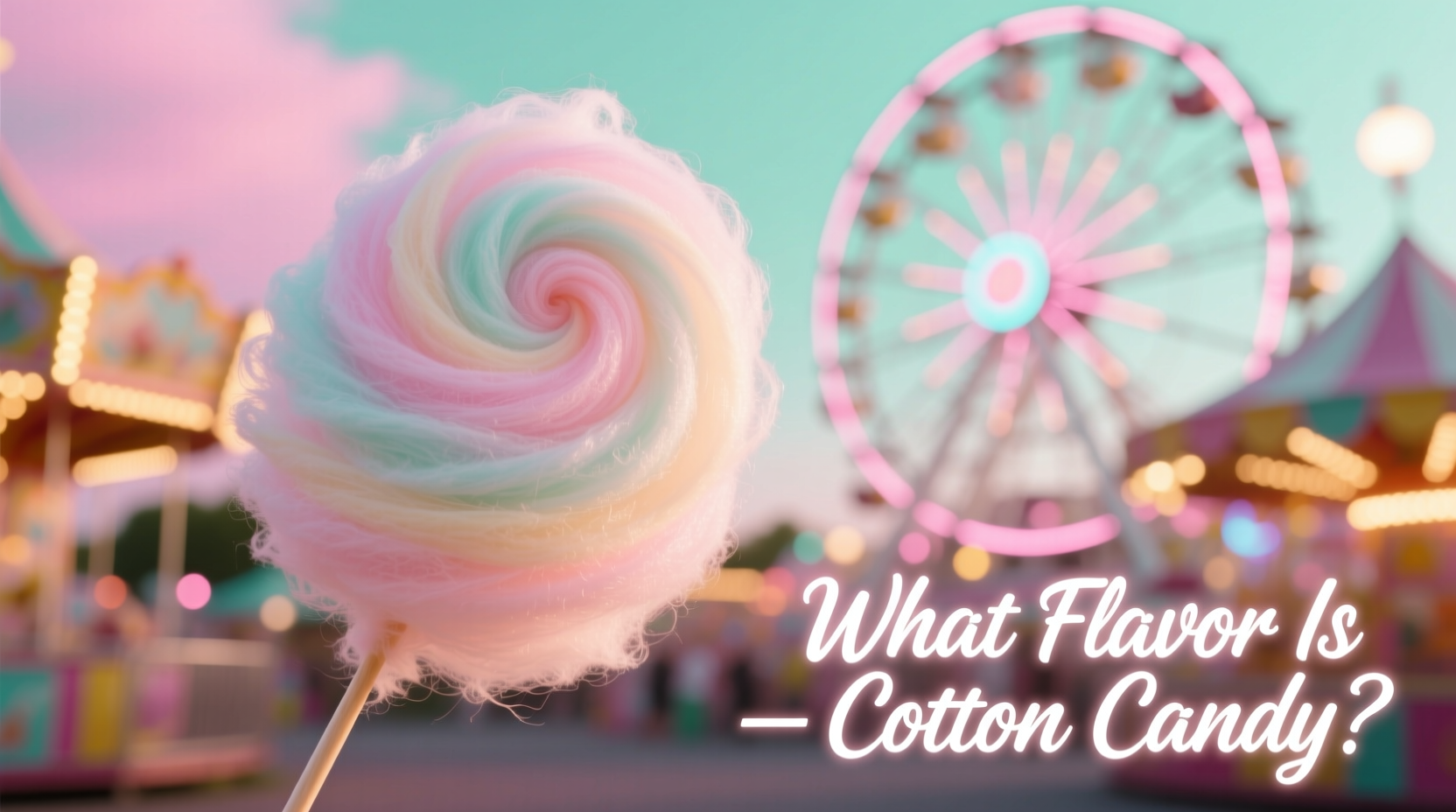Have you ever wondered what gives that fluffy, melt-in-your-mouth carnival treat its distinctive taste? While cotton candy looks like spun sugar clouds, its flavor profile is more specific than you might think. Understanding cotton candy flavors reveals fascinating insights about food science, marketing, and cultural preferences that have shaped this beloved confection.
The Evolution of Cotton Candy Flavors
Cotton candy's flavor journey began in 1897 when William Morrison and John C. Wharton introduced "Fairy Floss" at the Tennessee State Fair. Originally, cotton candy was simply sweetened with sugar without distinctive flavors. The breakthrough came in 1921 when Josef Lascaux, a dentist, coined the term "cotton candy" and introduced the first flavored versions.
Cotton Candy Flavor Timeline
- 1897: First commercial cotton candy introduced with plain sugar flavor
- 1921: Josef Lascaux introduces flavored cotton candy (vanilla and lemon)
- 1950s: Pink vanilla becomes standard for "original" flavor
- 1970s: Blue raspberry emerges as the dominant secondary flavor
- 2000s: Specialty flavors like bubble gum, watermelon, and sour apple gain popularity
How Cotton Candy Gets Its Flavor
Unlike traditional candy, cotton candy isn't flavored through the sugar itself. The flavor comes from food-grade flavoring oils added to the sugar mixture before spinning. These oils withstand the high heat of the cotton candy machine (reaching 300°F/150°C) without evaporating.
The spinning process creates thin sugar strands that cool rapidly, trapping the flavor molecules. This explains why cotton candy delivers an intense burst of flavor when it melts in your mouth—the flavoring concentrates on the surface of each strand.
| Common Cotton Candy Flavor | Color | Flavoring Type | Popularity Rating |
|---|---|---|---|
| Blue Raspberry | Bright blue | Artificial | ★★★★★ |
| Pink Vanilla | Bubblegum pink | Artificial | ★★★★☆ |
| Watermelon | Light green | Artificial | ★★★☆☆ |
| Strawberry | Bright red | Artificial | ★★★☆☆ |
| Original/Sugar | White | Unflavored | ★☆☆☆☆ |
Why Blue Raspberry Dominates Cotton Candy Selections
The prevalence of blue raspberry flavor in cotton candy represents a fascinating case of marketing psychology meeting food science. According to research from the Institute of Food Technologists, blue-colored foods stand out visually against typical carnival environments, making them more appealing to children.
Interestingly, blue raspberry doesn't correspond to any real fruit. It was created in the 1970s as a distinctive flavor option when multiple fruit flavors were being developed for candies and drinks. The artificial nature of blue raspberry flavor actually works to its advantage in cotton candy, as natural fruit flavors would degrade at the high temperatures required for spinning.

Regional Flavor Variations You Might Not Know
While blue raspberry and pink vanilla dominate in North America, cotton candy flavors vary significantly around the world:
- Japan: Matcha green tea and sakura (cherry blossom) flavors
- France: Lavender and violet flavors at traditional fairs
- Mexico: Tamarind and chili-lime variations
- India: Cardamom and mango flavors at street festivals
These regional differences highlight how cotton candy adapts to local taste preferences while maintaining its essential fluffy texture. The Food and Agriculture Organization of the United Nations notes that traditional flavor preferences often determine cotton candy variations in different cultural contexts (FAO Report on Global Food Preferences).
How to Identify Quality Cotton Candy Flavors
Not all cotton candy delivers the same flavor experience. Here's what to look for when selecting the best cotton candy:
- Immediate flavor release - Quality cotton candy should deliver flavor as soon as it touches your tongue
- Consistent color - Uneven coloring suggests poor flavor distribution
- Freshness - Stale cotton candy loses its flavor intensity within hours
- Texture - Properly spun cotton candy should dissolve quickly without gumminess
Food scientists at the University of California, Davis have found that the optimal flavor experience occurs when cotton candy is consumed within 30 minutes of preparation, before the delicate sugar strands begin to recrystallize (UC Davis Food Science Department).
Creating Your Own Cotton Candy Flavor Experience
If you're curious about cotton candy flavors, try this simple experiment at home. When eating cotton candy, notice how the flavor develops:
- First, you'll detect the initial aroma as you approach the treat
- Then comes the visual cue from the vibrant color
- As it melts in your mouth, the flavor bursts through
- Finally, you experience the lingering sweetness
This multi-sensory experience explains why cotton candy remains so popular despite its simple ingredients. The combination of visual appeal, texture, and concentrated flavor creates a memorable sensory experience that plain sugar could never achieve.
Frequently Asked Questions
Is cotton candy actually flavored or just colored sugar?
Cotton candy contains actual flavoring oils added to the sugar before spinning. These food-grade oils withstand high temperatures and provide the distinctive taste, while the colors come from food dyes.
Why is blue raspberry the most common cotton candy flavor?
Blue raspberry became popular because its bright color stands out at carnivals, and the artificial flavor holds up well to the high heat of cotton candy machines. It was developed in the 1970s as a distinctive flavor option that doesn't correspond to any real fruit.
Does cotton candy flavor change as it melts in your mouth?
Yes, cotton candy delivers a flavor burst as it melts because the flavoring oils are concentrated on the surface of each sugar strand. As the sugar dissolves, it releases the flavor molecules all at once, creating an intense taste experience.
Are there natural cotton candy flavors available?
Most commercial cotton candy uses artificial flavors because natural fruit flavors would degrade at the high temperatures required for spinning. Some specialty vendors offer natural alternatives using concentrated fruit extracts that can withstand the heat.











 浙公网安备
33010002000092号
浙公网安备
33010002000092号 浙B2-20120091-4
浙B2-20120091-4